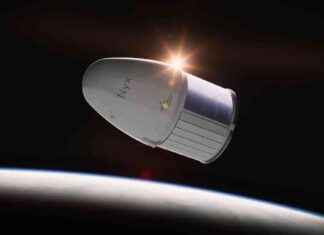As a regular on the night shift, Lisle police Officer Jim Dexter is used to seeing the occasional shooting star or lunar eclipse, though mostly he’s a witness to what he called “the odd behavior of animals and humans.”
University of Wisconsin video of fireball
A meteor seen across Wisconsin and northern Illinois was recorded by the east camera on the roof of the Atmospheric, Oceanic & Space Sciences Building at the University of Wisconsin at Madison.
A meteor seen across Wisconsin and northern Illinois was recorded by the east camera on the roof of the Atmospheric, Oceanic & Space Sciences Building at the University of Wisconsin at Madison.
See more videos
But early Monday morning, Dexter was on routine patrol near Interstate 88 when he saw “a giant green-lighted orb” streaking across the sky. He made sure his dash camera had captured the fireball, then told other officers on patrol.
Meteor caught on camera
Working up in the old control tower at O’Hare when this huge meteor/space junk lit up the night sky.
Working up in the old control tower at O’Hare when this huge meteor/space junk lit up the night sky.
See more videos
Soon after, the National Weather Service was tweeting his video of a meteor that lit up the skies across the Midwest around 1:30 a.m.
“It was too good not to share,” Dexter said. “I thought about how few people actually saw it, but then there’s the amount of people I got to share it with.”
The American Meteor Society, which monitors meteor showers, said it had received more than 380 reports of sightings Monday.
“The fireball was seen primarily from Illinois and Wisconsin, but witnesses from Michigan, Indiana, Ohio, Iowa, New York, Kentucky, Minnesota and Ontario (Canada) also reported the event,” the society said on its website.
The society said preliminary information from witness reports suggests the meteor ended its flight in Lake Michigan between the shores of Sheboygan, Wis. and Manitowoc, Wis.
The fireball seen Monday was similar in size and brightness to another observed in 2003 in Park Forest, where meteorite fragments fell onto south suburban homes, said Philipp Heck, the Robert A. Pritzker associate curator of meteoritics and polar studies at the Field Museum. In 2010, a smaller and dimmer fireball was visible from Chicago and landed near Mifflin, Wis., he said.
A meteor forms when a meteoroid — which is a fragment of an asteroid — enters Earth’s atmosphere after orbiting the sun. The atmosphere’s hot air helps the meteor evaporate, and what ends up on the ground or in the water — called a meteorite — is much smaller than what initially entered the atmosphere, Heck said. About 60,000 meteorites, which can be as small as pebbles, have been discovered on Earth, and some are on display at the Field Museum.
“It’s unusual that it was visible from a metropolitan area,” said Heck, adding that most fly over unpopulated areas or over oceans.
Although the National Weather Service’s office in Green Bay said the meteor was accompanied by a sonic boom that shook houses in the region, Heck said the meteor was not big enough to cause damage.
Weather radar, seismometers, video footage of the fireball and eyewitness reports will help determine how big the meteor was and how fast it traveled, according to Heck.
Officer Patrick Murphy of the Chillicothe Police Department near Peoria, was alone in his squad car in the middle of his patrol shift when he saw the green fireball as he was passing a traffic light. His dashcam, which is constantly recording, captured the meteor.
“It definitely caught me off guard a little bit. Obviously, I was not expecting to see that,” Murphy said. “I figured it was probably a meteor because I don’t know what else it could possibly be.”
He said he drove to the northeast part of town where it looked like the meteor had fallen, but there were no flames anywhere.
Murphy, who reported the meteor sighting to his sergeant, said the fireball surprised him. He said he has seen falling stars but “nothing this big, nothing even close to this big.”
lvivanco@chicagotribune.com
Twitter @lvivanco
Our editors found this article on this site using Google and regenerated it for our readers.







